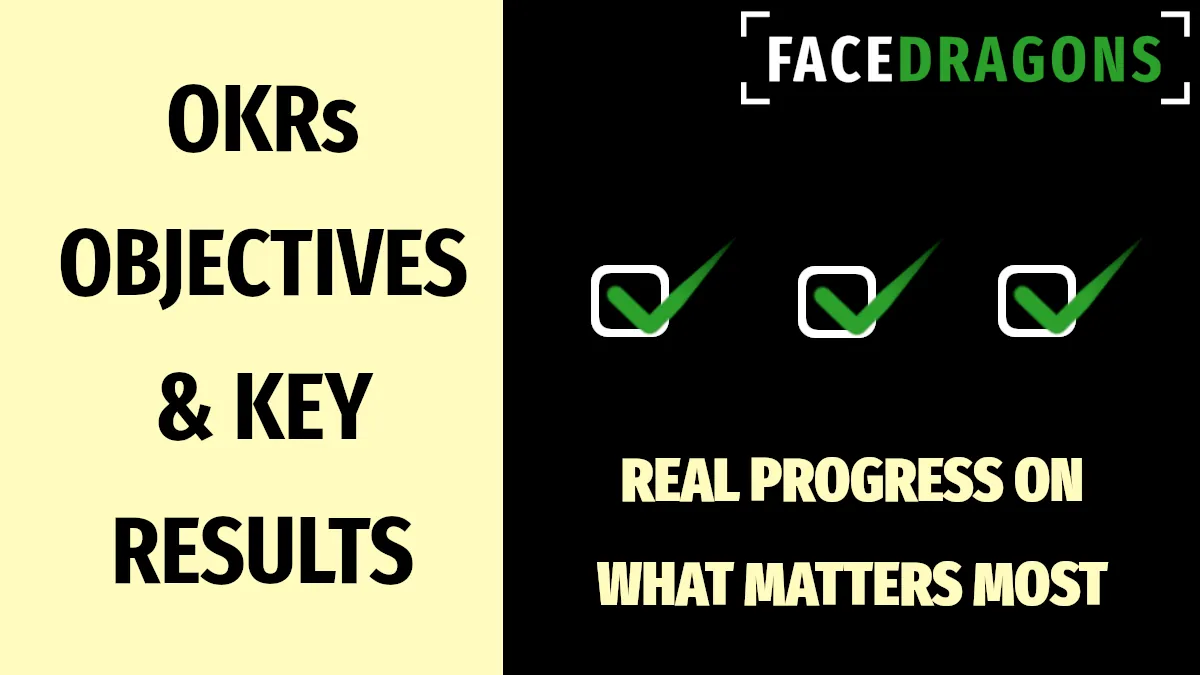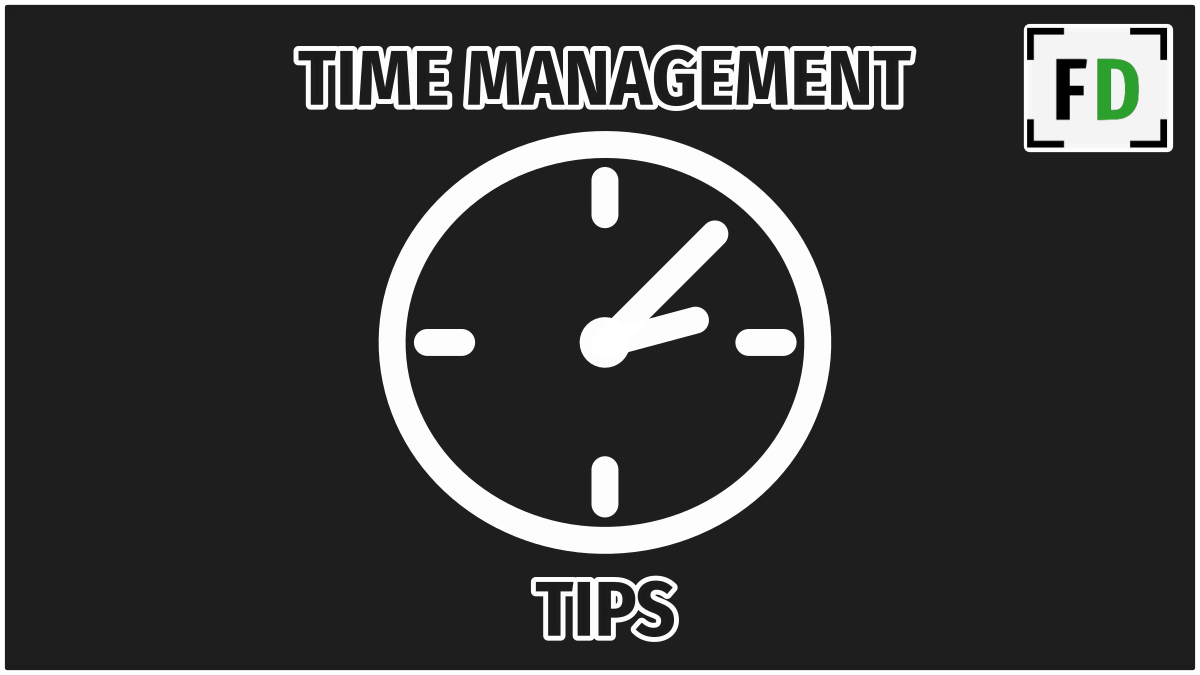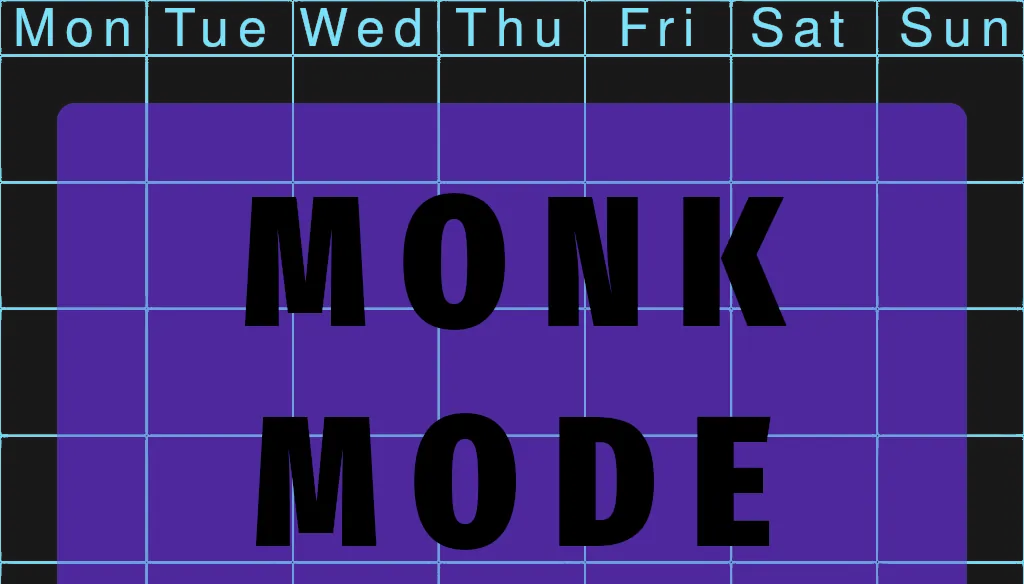For decades, people have relied on traditional goal-setting methods to drive personal and professional achievements. While having goals is certainly better than having none at all, many of these conventional approaches fail to produce significant, lasting progress. They often lack clarity, promote incremental rather than breakthrough thinking, and fail to create the necessary focus that keeps individuals and teams moving in unison. When you fall short, it’s far too easy to write off those missed targets as a natural hazard of life instead of using them as opportunities for course correction.
In this guide, you’ll learn why OKRs are a superior, results-driven approach to setting and achieving goals. By applying the insights and structures we’ll explore, you can find the kind of motivation, momentum, and clarity that sets you on a path to realizing your most ambitious visions—both in your personal life and professional pursuits.
Imagine you’re managing a product launch. You set a goal to “increase market share,” but you don’t define what that means in tangible terms or how quickly you intend to achieve it. The team might hold onto the notion of “growth,” yet each member defines “growth” differently. As a result, alignment suffers, and excitement wanes. Standard methods typically fail in these situations because they don’t clearly define what success looks like or exactly how to measure it.
But OKRs are different. OKRs first took shape at Intel under the leadership of Andy Grove and later found a massive following at Google. According to John Doerr—venture capitalist, author of “Measure What Matters,” and an early Google investor—OKRs created the necessary alignment, accountability, and ambition that helped fuel Google’s meteoric rise. Today, companies of all sizes—from startups to Fortune 500 giants—are harnessing the power of OKRs to reach extraordinary milestones. And it’s not just for companies: individuals are also embracing the framework to achieve personal dreams, whether that means writing a book, launching a nonprofit, or hitting a major fitness goal.
What Are OKRs?
OKR stands for Objectives and Key Results. These two elements work together to transform lofty aspirations into achievable outcomes:
Objectives are ambitious, inspiring statements that set a clear direction. An Objective typically represents a meaningful change or improvement you want to see in yourself, your team, or your organization. Think of an Objective as the “what” you want to achieve in a given timeframe.
Key Results are measurable, time-bound outcomes that define success for each Objective. They convert your dream into concrete evidence. Key Results answer the “how” and “when” by quantifying progress. If your Objective is to increase customer satisfaction, a Key Result might be to raise your Net Promoter Score (NPS) from 45 to 60 by the end of the quarter.
Objectives and Key Results work together to give your goal-setting process more purpose, ambition, and concrete measurement.
Why Use OKRs Vs. Goals

It’s worth exploring precisely why OKRs are so effective at changing behavior and encouraging better habits. When used correctly, OKRs can elevate performance and motivation in ways that traditional goal-setting often fails to achieve.
- Focus and Alignment: With OKRs, you direct your attention to what truly matters, eliminating the temptation to spread your energy across too many priorities. By explicitly stating both the “big picture” Objective and the Key Results that quantify achievement, you can ensure alignment across individuals, teams, and entire organizations. Everyone knows the overarching direction and can see how their roles contribute to the ultimate goals.
- Increased Accountability: Because Key Results are measurable, there’s nowhere to hide. This kind of transparency fosters a sense of ownership that ensures each team member understands what is expected of them. When a group collectively identifies the Key Results needed to succeed, it becomes much easier to hold one another accountable—no more vague or subjective metrics.
- Transparency and Motivation: One of the guiding principles of OKRs is to make them visible. Many organizations place their OKRs on easily accessible dashboards or shared documents so everyone can see progress in real-time. Knowing that your results are on display can be highly motivating, encouraging you to push a little harder. I keep my goals on my phone in my personal knowledge management system, and although they’re not publically available, I see them everyday.
- Iteration and Improvement: Because OKRs are typically set and reviewed quarterly (some do monthly or bi-annual cycles, depending on the context), you have frequent opportunities to reassess and refine your approach. This iterative nature is especially valuable in fast-paced industries or personal growth pursuits where agility is critical. Regular check-ins allow you to pivot quickly if new data suggests you’re off track or if market conditions change.
Set Impactful Objectives
Crafting excellent Objectives is an art form. An effective Objective should be aspirational, concise, and, importantly, emotionally compelling. It should make you or your team think, “If we accomplish this, we’ll be in a radically better place than we are now.”
For instance, imagine a technology startup setting an Objective like, “Delight our users with a world-class mobile app experience.” The word “delight” signals ambition and a focus on user satisfaction. While it’s qualitative, it provides a clear direction for the entire organization: everything revolves around creating an exceptional experience.
My own consulting experience has shown that the Objectives people find most motivating are those that tie into a deeper purpose—something they sincerely care about improving. When every stakeholder is personally invested in an Objective, they’re more likely to put in the work necessary to achieve it.
Craft Measurable Key Results
While the Objective is your north star, Key Results tell you whether you are heading in the right direction and at the right pace. Key Results must be specific, time-bound, and quantifiable. Instead of stating, “Improve customer satisfaction,” clarify how you’ll measure improvement, for example: “Raise average customer feedback score from 3.2 to 4.0 by December 31.” The timeline and metric both eliminate ambiguity.
A rule of thumb is to aim for two to four Key Results per Objective. This ensures you can maintain focus without being overwhelmed. If you have too many Key Results, you dilute your focus and make it harder to see if meaningful progress is happening.
Align Your Objectives and Key Results
Alignment becomes crucial when dealing with multiple teams or departments. Some companies use a“cascading” system, where top-level corporate Objectives inform departmental Objectives, which then inform individual Objectives. Other organizations adopt a more collaborative approach, encouraging departments to propose their own Objectives that support the company’s overarching vision. Regardless of the exact system, frequent communication and transparency are key.
Here’s a simple alignment approach I’ve used with Fortune 500 clients and startups alike:
- Begin with the company’s overarching Objective (for a quarter or a year).
- In a collaborative meeting, each department identifies how they can contribute to that Objective.
- Teams then set their own Key Results that ladder up to the overarching Objective.
- Each individual within the team understands how their tasks feed into these Key Results.
Tracking and Adjusting Key Results
One major advantage of OKRs is their built-in structure for continuous tracking and iteration. Setting OKRs at a quarter planning session (or whichever cycle you choose) is just the start.
Most teams hold weekly or bi-weekly “check-ins.” In these sessions, you assess how far along you are with each Key Result. You might use a progress indicator—like a percentage or a score—to measure where you stand. If your Key Result is “Increase new subscribers by 20%,” and you’re 10% into the quarter but only at 2% growth, it’s time for a conversation: What tactics are working? Which ones aren’t? Do we need to pivot or double down on something that is showing promise?
By consistently reviewing OKRs, you maintain high awareness, adapt strategies in real-time, and avoid the all-too-common scenario where you only reflect on goals at the end of the year. These regular check-ins help ensure that everyone is pulling in the same direction and that any obstacles are promptly addressed.
How to Implement OKRs Step by Step

Step 1: Define Your Purpose or Vision
Start with why. Clarify your bigger picture. For a business, it might be “To revolutionize sustainable packaging.” For an individual’s personal goal, it could be “To become a respected thought leader in digital marketing.” Think big here, we’ll use this purpose to drill down and get specific next.
Step 2: Set Impactful Objectives
Identify a handful of Objectives that will serve as your main areas of focus for the next quarter or year. Keep them ambitious yet attainable, and ensure they get you excited – no dry, boring goals, please! If you don’t care deeply about them, you won’t give them your all.
Step 3: Create Clear Key Results
For each Objective, define two to four Key Results that make success unambiguously measurable. Use specific metrics, like a percentage increase in sales or a target date for releasing a new product feature.
Step 4: Align Across Teams
If you’re working within a team or organization, ensure everyone can see how their Key Results link to the bigger Objectives. This can be done through an all-hands meeting, a shared document, or a specialized tool.
Step 5: Track Progress and Regularly Review
Establish a rhythm of weekly or bi-weekly reviews to monitor Key Results. Adjust course as necessary. If you see quick wins, replicate them. If you notice areas lagging, try a new tactic.
Step 6: Hold a Quarterly Review
At the end of the quarter, evaluate outcomes objectively. Which Key Results were fully achieved? Which were partially met? Why? This reflection is crucial for continuous improvement and for setting new OKRs.
OKR Examples
Let’s look at a few scenarios to illustrate how OKRs can be applied in different contexts.
| Objective | Key Result #1 | Key Result #2 | Key Result #3 |
|---|---|---|---|
| Become a more proficient public speaker | Deliver three presentations at local meetups within the next quarter. | Collect feedback from at least 50 audience members and achieve an average satisfaction rating of 8/10. | Reduce reliance on notes by rehearsing each speech a minimum of five times. |
| Expand into a new regional market | Secure five new clients in that region by the end of the quarter. | Increase brand recognition as measured by a 15% uptick in regional website traffic. | Generate $500,000 in new sales revenue, specifically from the region. |
| Develop a high-performing product development team | Reduce average project completion time from eight weeks to six weeks. | Achieve an average customer satisfaction score of 4.5/5 on all product feature releases. | Maintain at least 90% completion rate for all sprint tasks. |
| Secure Series A funding to fuel growth | Increase monthly recurring revenue (MRR) from $50k to $100k within six months. | Achieve a user retention rate of at least 80% for the startup’s core product. | Generate $500,000 in new sales revenue, specifically from the region |
Don’t Make These Common OKR Mistakes
When implementing OKRs, many people stumble into predictable traps. Avoiding these will ensure your OKRs remain a dynamic force rather than becoming yet another bureaucratic exercise.
Too Many OKRs: In an eagerness to improve everything at once, teams or individuals often overload themselves with Objectives. This typically leads to diluted focus. Stick to a manageable number (one to three Objectives per cycle) to maintain a high level of energy and commitment.
Mixing OKRs and Task Lists: OKRs are not day-to-day tasks. They should be outcome-focused. A Key Result typically states “What success looks like,” not “What steps we’ll take.” The steps come later as part of your action plan. Confusing tasks (such as “Send weekly newsletter”) with Key Results (such as “Increase newsletter subscriber count by 30% in Q2”) dilutes the power of OKRs.
Failing to Review: One of the greatest strengths of the OKR system is its allowance for iteration. If you set your OKRs at the beginning of the quarter and forget about them until the end, you lose the dynamic aspect that makes them so effective. Regular check-ins are non-negotiable.
Tools to Track OKRs
To help you start strong, here are some straightforward methods to keep track of OKRs.
1. Create a spreadsheet or table with the following columns:
- Objective (What do you want to achieve?)
- Key Result (How will you measure success?)
- Progress (Numerical tracking, percentage, or score out of 10)
- Owner (Who is responsible?)
- Notes/Next Steps (Any relevant action items or commentary)
Update this document weekly or bi-weekly. While basic, this worksheet provides a clear visual representation that is easy to share.
2. Several specialized software tools exist to help manage and visualize OKRs, especially for larger organizations. Solutions like BetterWorks, Koan, Ally, and Gtmhub (now Quantitative Strategy AI) integrate seamlessly with other project management and productivity apps. These platforms provide dashboards, analytics, and automated reminders, making it simpler to stay on top of Key Results.
3. At the end of each quarter, hold a review session with your team (or with yourself if you’re doing this personally). Start by recapping each Objective and Key Result, noting which goals were met, exceeded, or missed. Use data and real examples to frame the discussion. Then, delve into the “why” behind each result:
- What did we do well that led to success?
- What were the obstacles that prevented us from hitting certain goals?
- How should we adjust our approach or priorities in the next quarter?
This review is also an opportunity for deep reflection. If, for instance, you exceeded a Key Result by a wide margin, perhaps you set the bar too low. OKRs should be stretch goals—ambitious but achievable. On the other hand, if you fell significantly short, it may be that the objective was too aggressive or that your strategies and resources didn’t align. There is no shame in missing an OKR if you learn from the experience and make better-informed decisions in the next cycle.
Transform Life and Work
OKRs are more than a performance management trend—they’re a proven framework for turning dreams into actionable plans. Whether you’re a professional looking to turbocharge career growth, a team leader aiming to increase alignment and engagement, or an individual trying to build out and implement their list of personal goals, OKRs offer a clear path to get there faster and more confidently.
You’ve now learned how to set inspiring Objectives, measure them with precise Key Results, and integrate regular check-ins and reviews into your workflow. Perhaps most importantly, you’ve seen how OKRs foster the ambition and alignment that fuel extraordinary outcomes. The possibilities are endless once you commit to consistent, transparent tracking and regular reflection.
So why wait? Carve out a few hours this week to start drafting your first set of OKRs. Invite your team or accountability partners to collaborate. Embrace the power of data-driven progress, and make it a habit to celebrate small wins along the way. Remember the advice from “Measure What Matters”: well-crafted OKRs can transform your entire mindset. They elevate the conversation from “What do we have to do?” to “What amazing achievements are we capable of?”
Every day you wait is a missed opportunity to clarify your ambitions and focus your energy. Harness the OKR methodology now, and watch how quickly you can move toward the goals that genuinely matter. Here’s to your success—may you find the alignment, accountability, and motivation to accomplish more than you ever thought possible.










